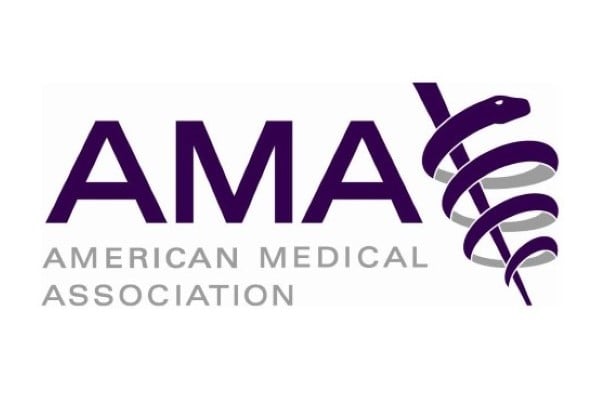What Is Social EM?
Sahar Rammaha, OMS-IV, Michigan State University College of Osteopathic Medicine
EMRA MSC Midwest Coordinator, 2021-23
Revelle Gappy, MS-III, Oakland University William Beaumont School of Medicine
EMRA MSC Great Lakes Regional Representative, 2022-23
Jacques Lowe, MS-IV, Carle Illinois College of Medicine
EMRA MSC Great Plains Regional Representative, 2022-23
Social EM is a growing field that recognizes that healthcare is not just about treating disease or injuries, but also understands the importance of considering one's social determinants of health (SDOH) as it impacts emergency care.1
The demand for social EM has always been present, and in many ways initiatives were already established before the term was coined. The first social emergency medicine fellowship was opened in 2010 at Highland Hospital in Oakland, Calif., and since then many programs followed suit.
Emergency physicians recognize that by not addressing SDOH, a patient can enter a vicious cycle of repeat visits to the emergency department thereby an increase in healthcare utilization. Studies have supported the implementation of social work programs in the emergency department that address SDOH have improved health outcomes of high-risk patients.2 This led to patients being less likely to be readmitted to the hospital and better patient care as follow-up care became individualized. This study is one example of how social EM, and addressing social determinants, is critical in providing patient care.
So what is social EM?
Emergency medicine physicians take pride in being one of the only access points to health care for many underserved populations, and in order to provide effective care, social determinants of health must be considered. These determinants include poverty, housing instability, food insecurity, substance use, trauma and violence, health literacy, etc. With social EM, the goal is to gain further insight about the interplay of social forces and the emergency care system in order to address solutions for the lives of our patients and their communities. This is done by understanding the patient needs: What does our community look like? What services are offered? How can I help?
Our goal with this article is to get you exposed to a few social determinants and ways to get involved as a medical student!
Food insecurity
ED patients are more likely to face food insecurity than the general population, with research showing that other socioeconomic stressors come into play.3 This can have a significant impact on population health and residency programs have taken measures to address this. For example, Harbor-UCLA has created a food pharmacy that delivers fresh produce every Wednesday morning for community members. Other programs provide resources to local food banks, meal programs, even deliver packaged goods within their ED to distribute. As a medical student, getting to know what the community you serve offers and addressing the population needs can be beneficial for the lives of the patients you serve.
Housing/Houselessness
To address patients who have experienced houselessness, efforts outside of the emergency department include street medicine where a mobile team of healthcare providers, including medical students, will go into the community and address medical needs. This provides the opportunity to meet people where they're at and establish trust with the community they serve.
In addition to programs implemented outside the hospital, within the ED more resources have been made available to patients. Medical students could take advantage of learning the roles of case management, social work, and other ancillary staff that connect at-risk patients to ensuring they have insurance, transportation, and better follow-up. Getting yourself familiarized with what your services are in your hospital and understanding the barriers to care will help strengthen your disposition for patients.
Substance Use
For patients who may face substance use disorder, existing medication-assisted treatment (MAT) has deemed itself beneficial. Not all patients are going to be ready to enter treatment. As a medical student, you can assure them the emergency department will always be there to serve them safely when they're ready. MAT services can be found within the hospital, with some programs allowing for consulting services. Incorporation of MAT has been shown to significantly reduce the mortality rate for treated patients, showing the importance of its utility.4
An additional effort outside the hospital comes in the form of harm reduction. Harm reduction programs allow for clean exchange and safe use, reducing morbidity rates associated with IVDU. Residency programs that familiarize themselves with local resources are able to provide patients who are experiencing substance abuse with information about addiction treatment programs. Being able to connect them with mental health services, and other existing resources that exist to serve them long-term.
Education, Language, and Health Literacy
Less affluent communities face the challenge of having low health literacy. This means patients often face the inability to read, understand, or navigate the healthcare system. The emergency department can often be a high-stress and fast-paced environment, making it difficult for residents to identify and address health literacy. Medical students however have the opportunity to spend more time with patients and could use the opportunity to screen patients with questions. Are they really understanding the role hypertension has on comorbidities? Do they understand the importance of not missing dialysis or medications? Are there other existing barriers to care that they might not be sharing?
As our medical system faces prolonged wait times in getting appointments with PCP, it’s important to understand this and spend time ensuring patients truly comprehend their care plan. Asking the right questions that are individualized toward their care will help you gauge their health literacy and hopefully make meaningful changes to their care plan.
The listed above only begins to scratch the surface of all the possible areas of focus and being involved doesn’t require addressing all the needs. Medical students should be encouraged to find their niche and research ways to get involved. Unfortunately, the need for public health efforts are high, but this specialty has attracted some of the most innovative and altruistic people in the field. We don’t doubt the future is bright, and we appreciate all your continuous efforts to best serve your patients. For those who don’t know where to begin, being an EMRA member allows you to get involved with committees. The Social EM Committee has worked on many projects including writing a Social EM guide that discusses these topics and ways to address them. Joining a committee is free and linked above!
References
- Task Force on Social Emergency Medicine, American College of Emergency Physicians. Social emergency medicine: An emerging practice. Ann Emerg Med. 2001;38(2):S28-33.
- Selby S, Wang D, Murray E, Lang E. Emergency Departments as the Health Safety Nets of Society: A Descriptive and Multicenter Analysis of Social Worker Support in the Emergency Room. Cureus. 2018; 4;10(9):e3247.
- Doram KM, Estrella A, Mijanovich T, Castelblanco D, Lee DC, Gelberg L. Food Insecurity and Frequent Emergency Department Use. Ann Emerg Med. 2017 Research Forum;70(4):S100.
- Larochelle MR, Bernson D, Land T, et al. (2018). Medication for opioid use disorder after nonfatal opioid overdose and association with mortality: a cohort study. Ann Intern Med. 2018;169(3):137-145.
Related Content

Mar 22, 2021
Beginners’ Guide to Toxicology for Medical Students
Toxicology is a vast field, and as medical students, we have very limited exposure to the field while in school. There are some quick and easy steps you can take as a medical student to introduce and immerse yourself into the field of Toxicology, so without further ado, let’s talk Tox!

Dec 29, 2020
June 2021 AMA Update
Between attending kick-boxing classes and posting memes in the “Shenanigans” GroupMe, medical students from across the country met virtually earlier this month to debate and vote on health policy issues at the American Medical Association (AMA) Medical Student Section (MSS) Meeting. This event empowers student members to help shape the policy of the AMA and their advocacy efforts at a national and local level.

Dec 29, 2020
Fall 2020 AMA Delegate Report
Through a combination of Zoom meetings and Lumi voting platforms, over 1,000 participants contributed to the 2020 Special Meeting of the AMA House of Delegates (HOD) between November 7 and November 17, including medical students, residents, and physician delegates from across the country. Read the EMRA Student Delegate report.




